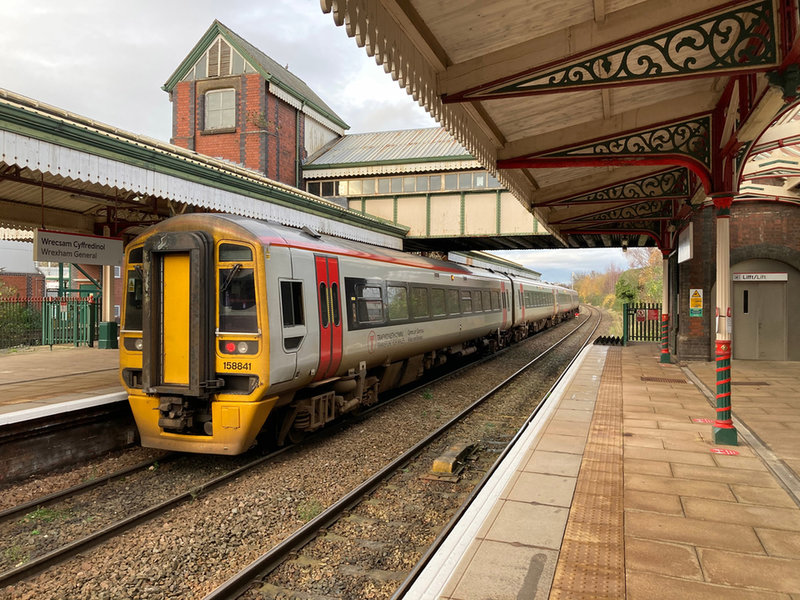Industry
Can railways accelerate post-Covid-19 economic recovery?
A £200m rail upgrade linking Merseyside and North Wales is being pitched as a major boost for the area’s post-Covid recovery and is one of several international projects with the same goal. Frankie Youd highlights the ways that railway developments could drive economic recovery after the pandemic, using examples from around the world.
The impact of Covid-19 has been highly damaging for the UK rail industry, which has seen decreased footfall, reduced services and a downturn of season ticket purchasing which have caused major economic impacts.
Passenger rail journeys began declining from the beginning of March last year and by the end of financial Q1 footfall had dropped to a low of 5% compared to normal levels. This saw income from fares from 2020-21 Q1 being dropping 93.1% year-on-year, according to last year's The Office of Rail and Road report.
Now more than ever the rail industry needs to increase passenger numbers for the sector to bounce back and to work towards economic recovery. In the UK, the government has issued financial support funding to maintain the UK’s rail services. Alongside this, several projects have been proposed to act as a catalyst for driving the industry’s economic recovery in the post-pandemic world.

Aerial view of the derailment. Image: UK Government
Linking Merseyside with North Wales, an economic recovery project
A proposed project to enable post-Covid economic recovery and boost connectivity will upgrade the railway linking Merseyside and North Wales.
Costing £200m, the upgrade would see these areas linked via a new super hub at Chester. The funding breaks down as £60m to connect Liverpool to Wrexham, £20m for a new modernised station at Shotton, Flintshire, £60m to modernise and upgrade Chester station, and £60m to speed up the North Wales mainline which runs to Holyhead.
The proposal is headed up by the North Wales and Mersey Dee Task Force, as well as Growth Track 360, an initiative launched to secure funding for rail improvements that aim to transform Cheshire and the North Wales region economically.
One in five candidates turn down job interviews or offers due to travel inaccessibility.
The current rail network that joins North Wales, Cheshire and Wirral sees journeys taking over 140 minutes by rail compared with only 50 minutes by car; this causes frequent congestion in the areas around these locations.
Road congestion is predicted to grow by 33% in the next 20 years, according to Growth Track 360, which not only impacts commuter times but also creates many environmental complications.
Investment in this network would not only reduce journey times and improve the frequency of services for passengers but also improve connectivity locally and nationally. Cheshire and Wirral have important economic links to North Wales, which projects such as this would enable to grow significantly due to improved transport links.
Alongside the economic benefits, the investment would also help jobseekers. At present, according to Growth Track 360, one in five candidates turn down job interviews or offers due to travel inaccessibility. This project would allow for a better connection for people commuting to jobs within the different areas, seeing a rise in individuals who would be able to commute to a job via rail.
Technology focus for Philadelphia’s rail network
The Covid-19 pandemic has also impacted the US rail sector, with a reported 70% decrease in travel via train in urban areas from May last year, according to the team behind real-time worldwide public transit app Moovit.
One project, which was recently approved by the Southeastern Pennsylvania Transportation Authority (SEPTA) board, acts as a five-year strategic plan for the authority’s recovery from the impacts of Covid-19, setting a vision for future growth.
SEPTA is the regional public transportation authority operating commuter rail, light rail and other services for nearly four million residents in the five counties in and around Philadelphia, Pennsylvania.
The introduction of the plan, SEPTA Forward: A Vision for a Stronger Future, provides a framework for the industry to enable economic recovery and continue to provide service for its users. The function of the strategic plan is to identify the key challenges which the industry has faced due to the impacts of the pandemic, as well as set a vision for where the authority needs to head regarding growth and development.
Technology is really the infrastructure of the 21st century for trip planning, for real-time communications and prepayment.
SEPTA assistant general manager for planning Jody Holton discusses this further. “The strategic plan marks an important step to establish a clear direction and set priorities. It will help us implement the strategies in a coordinated fashion and build towards our long-term vision of a transit network that meets the needs of a wide variety of riders,” Holton says.
“Technology is really the infrastructure of the 21st century for trip planning, for real-time communications and prepayment. So, we are focusing our investments in those areas.”
New technologies will focus on real-time communications, contactless solutions, real-time crowding information, and prepayment options for customers. The inclusion of this technology aims to provide an attractive, positive passenger journey experience as well as increase ease of accessibility.

Image of Axel Schuppe. Credit: The German Railway Industry Association.
Image of Axel Schuppe. Credit: The German Railway Industry Association.

Accelerating the digitalisation of Germany’s rail network
Germany has also faced economic setbacks due to the impacts of Covid-19 on the rail sector. However, political awareness within the German government surrounding the importance of the rail industry has seen government funding initiatives being launched to support the industry.
At the start of March 2021, the German Federal Government and the German Rail Industry Association announced they will work together to accelerate the digitalisation of the German rail network. The initiative is being financed by the federal government’s coronavirus stimulus package which sees investments of €500m being provided for the industry.
This digitalisation project aims to replace older systems found within seven regional routes with the newest digital interlocking technology. This technology will enable more trains being able to run on existing tracks as well as increasing train punctuality and reliability, which is not only key for passengers but also the transportation of goods.
The new technology will also form a vital basis for European train control systems (ETCS), a monitoring system that enables interoperability of national railway systems. ETCS will increase the speed of trains and bring about the reduction of costs associated with maintaining and installing signalling systems.
Including digitisation and more focus on technology creates an interesting working environment, which is key to acquiring new people and young professionals.
German Railway Industry Association general manager Axel Schuppe explains: “Digital interlocking technology is increasing the availability and reliability of the railways, and thus, it's punctuality, this is the main thing for goods and passengers.
“But I think the most important benefit is that the digital interlockings form an indispensable basis for ETCS, they enable high-speed routes that connect metropolises throughout Europe as quickly as aeroplanes, I think this is the main benefit.”
Alongside the economic benefits, the acceleration programme will create a basis for up to 10,000 industry jobs, according to projections made by the association.
Schuppe says: “It’s a great impact on the people because the question is how to mitigate demographic developments, what is the best argument to acquire young professionals to work in the railway system and the railway network. Almost 50% of the operating staff in the rail network are going to be retired in the next decade.
“Including digitisation and more focus on technology creates an interesting working environment, which is key to acquiring new people and young professionals.”
Railway projects as varied as increasing digitalisation, laying new track and improving location connections form the basis of economic bounce back for the railway industry in a post-pandemic world.
Main image: Transport for Wales class 158 at Wrexham General on its way to Holyhead. Credit: Alex Daniels | Shutterstock.